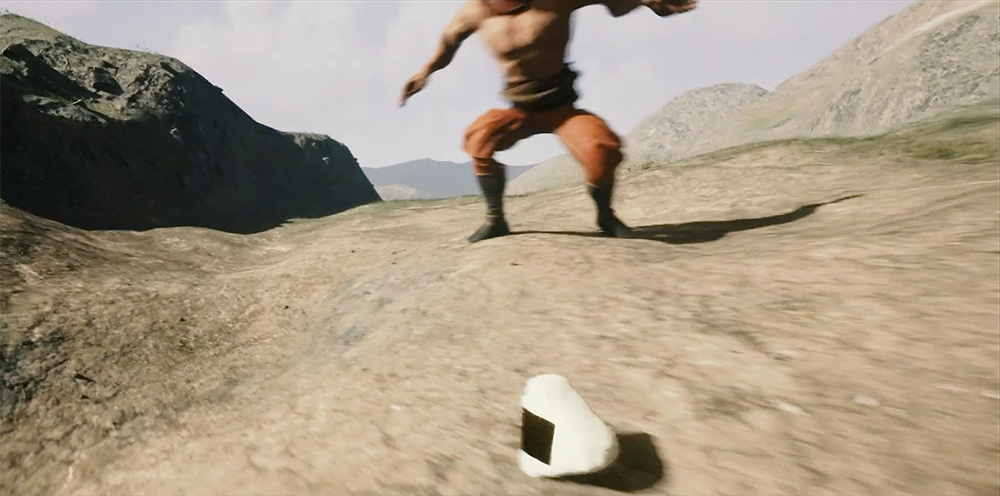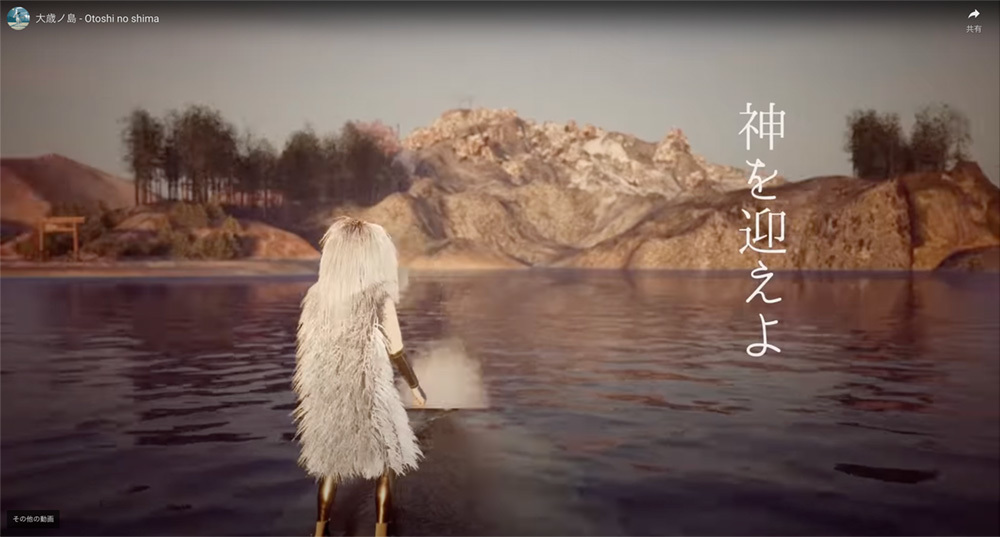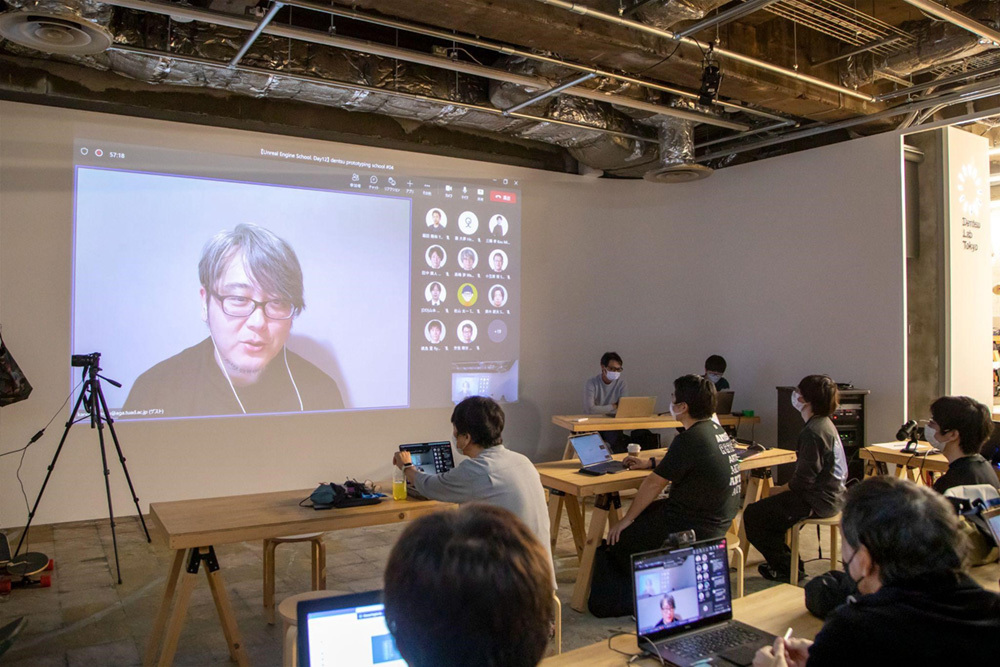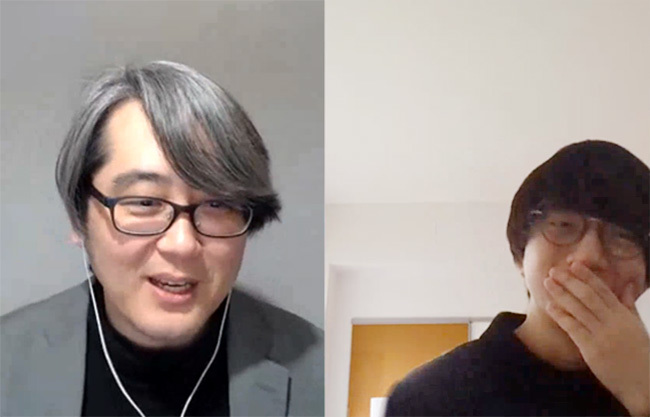Note: This website was automatically translated, so some terms or nuances may not be completely accurate.
Could a '3D game development tool' transform Dentsu Inc.'s creative approach!?

Mamoru Shikano
Tohoku University of Art and Design

Ryosuke Ono
Dentsu Inc.

What happens when the creators of Dentsu Inc., armed with planning skills, graphic design skills, copywriting skills, production skills, and more, master cutting-edge technology?
"dentsu prototyping hub" is a workshop series hosted by Dentsu Inc.'s creative technologists. To address increasingly diverse client challenges, each session invites leading experts in cutting-edge digital tools as instructors, creating a space for learning.
This time, we introduce the "Unreal Engine School" workshop. A total of 163 participants from the Dentsu Group took on the challenge of "Unreal Engine" (*), a 3D game development environment.
After 12 sessions, what kind of works were created? And what are the possibilities for Unreal Engine and future creativity? Ryunosuke Ono, who runs dentsu prototyping hub, discusses this with instructor Mamoru Kano.
※Unreal Engine
https://www.unrealengine.com/ja/
A platform for 3D game development provided by Epic Games. It is fundamentally free for anyone to use and is not only employed in the development of numerous hit games worldwide but is also gaining attention as a tool for creating interactive 3D content beyond gaming. For production, it allows the use of various paid and free "assets" (material content such as objects and character models).
<TABLE of Contents>
▼Bringing Dentsu Inc. Creators' Ideas to Life with Unreal Engine
▼"These are the people who will change the times"
▼The Era of "Virtual Location Scouting" in 3D Space Has Arrived
▼Accelerating Creation by Testing Ideas Instantly "Without Rendering"
We brought Dentsu Inc. creators' ideas to life using Unreal Engine
I'm Ryunosuke Ono from dentsu prototyping hub. First, a brief recap of our previous workshops.
The first session featured "TouchDesigner" (※), the "fastest prototyping tool" that lets you freely control devices and visuals without writing code.
The second workshop featured Blender, the 3D modeling tool now used everywhere around the world.
※TouchDesigner related article:
Freely control devices and visuals. The "fastest prototyping tool" is changing creativity
Each workshop featured instructors who are among Japan's leading experts in their fields. Despite the pandemic, both workshops were hugely successful.
The third workshop, held as participation numbers continued to grow, was the "Unreal Engine School" for learning the 3D game development environment "Unreal Engine".
The instructor was Mamoru Kano, who utilizes Unreal Engine in various fields and holds a research laboratory in the Department of Visual Communication at Tohoku University of Art and Design (TUAD).

https://www.zugakousaku.com/otoshi

After completing 12 sessions, the final presentation at Dentsu Lab Tokyo showcased the work (prototypes) of 15 Dentsu Inc. creators.
Here, we introduce 5 of those works through video!
"Office Chair"
Hayato Ishimatsu (Art Director, Dentsu Inc. Creative Planning Division 2)
Commentary by Mr. Shikano: The surreal world where you manipulate multiple office chairs to arrange them correctly is captivating. Skillfully utilizing Unreal Engine's vehicle templates translates the physics-based controls directly into fun, creating a fresh experience akin to an extreme sport.
Yuto Ishimatsu's Comment: What first amazed me about Unreal Engine was how many affordable parts you can find on the Marketplace, allowing you to easily build virtual spaces with your own hands. When I get my hands on tools like this, I usually end up wanting to make something incredibly silly (laughs). That's how "Office Chair" became my first project. I'm sure I'll accumulate more characters and assets going forward, so I'd like to try building my own virtual photography studio.
"Just press a button and it keeps unfolding."
Taichi Sayama (Art Director, Creative Planning Division 6, Dentsu Inc.)
Commentary by Mr. Shikao: By limiting the interaction to simply pressing a button, it paradoxically suggests infinite possibilities for the resulting effects. The unique texture is striking, making you want to keep playing with it. The buttons popping out and the continuous stream of unexpected developments become addictive.
Taichi Sayama's Comment: I just kept making buttons where something happens when you press them (laughs). Not just Unreal Engine, but high-end tools are becoming more accessible, making it easier to reap their benefits. Joining the dentsu prototyping hub transformed the idea of "it seems possible" into a tangible sense of "it feels doable" or "probably achievable." Hands-on experience really is crucial.
"Destruction Simulation and Music Synchronization Test"
Yasuhiro Tsuchiya (Researcher, Creative Technologist, Dentsu Inc. zero / Dentsu Lab Tokyo)
Comment by Mr. Shikano: This work effectively utilizes the "destruction" system, which has gained stability since Unreal Engine 5. The delicate synchronization between sound and visuals is impressive, successfully leveraging 3D simulation as a sound visualizer.
Yasuhiro Tsuchiya's Comment: I only knew Unreal Engine as a game development environment, but actually working with it revealed how sophisticated its camera handling and lighting simulation are. It allows you to easily simulate shots that previously required setting up large-scale lighting or using cranes. I believe that when the generation that masters this kind of visual creation starts working on film production, the way visuals are made will clearly change from what we see today.
"Wings of Icarus"
Rise Yaga (Director, Metaverse Production Department, Dentsu Inc. Creative X)
Kano's Brief Review: I was amazed by how they challenged themselves with a film project utilizing Unreal Engine's graphics capabilities, achieving such high quality despite the short production time. The attention to detail in lighting, shot composition, and even facial expressions results in a finish reminiscent of a scene from a movie.
Yoshika Ryo Comment: Inspired by Mr. Shikano's "Otoshi no Shima," this project challenged me to create a photorealistic CG movie. Everything is a combination of free assets from the Marketplace; I created nothing myself. It made me realize how dramatically CG techniques have evolved, enabling CG animation to be created in frighteningly short timeframes. I look forward to dentsu prototyping hub continuing as a place to access cutting-edge information and acquire skills!
"Omusubi Kororin" by Kyohei Myoga
Art Director, Creative Planning Division 6, Dentsu Inc.
Commentary by Mr. Shikano: A vast world created through landscape design. Players chase a rice ball tumbling down at high speed. The situation alone is humorous and makes you want to play it. What's impressive is that this idea has been polished to a level where it could be used in actual projects.
Kyohei Myoga's Comment: I've already applied what I learned here, using a prototype made in Unreal Engine for client proposals and short videos in my actual work. Now, I'm moving beyond just mastering the technology and focusing on the challenge of reaching a level where people find it "fun" and "satisfying." I want to keep using Unreal Engine more and more, so I'm eager to learn a lot more.
Now, let's reflect on the entire workshop with instructor Mr. Kano and consider the future of Unreal Engine and creativity!
"These are the people who will change the times."

Axe: What were your thoughts when you received the offer to be an instructor for the "Unreal Engine School"?
Kano: I was surprised by Dentsu Inc.'s willingness to take on this challenge, especially since the participants weren't engineers, but CM planners, copywriters, art directors, and others. On the other hand, while Unreal Engine (UE) has traditionally been a tool for games and film, its barriers to entry have recently lowered and its applications expanded. So I also thought, "It's really impressive they're focusing on UE right now."
Axe: Thank you! Could you share your honest impressions of the participants' work?
Kanō: Overall, I felt they were professionals constantly thinking about "how to bring ideas to life." Even though it was their first experience, they weren't just thinking "I tried using the technology," but rather "I used the technology to try something interesting like this." On top of that, their presentations were incredibly polished. I think people like this are the ones who will change the times.
Axe: The teaching materials were wonderfully designed for beginners. You consolidated versatile functions into a single actor(※), letting them start with creativity without tackling the hard stuff first. Then, if they wanted to dive deeper, they could study the actor's inner workings.
※Actor = An object that can exist within a scene. By adding various functions, it can be used like an app.
Kanō: UE is a tool with immense potential, like a huge mountain you can climb from anywhere. But if you stumble at the very start, you might never try to climb it again. That's why we were especially mindful of the entry point and path when creating the materials.
Axe: We want to increase UE users within Dentsu Inc. going forward. Any advice for beginners?
Shikano: If you start with a vague goal like "I want to learn Unreal Engine," you're likely to get discouraged. It's better to narrow your entry point based on what you want to achieve. For example, if you want to create an open world, focus on learning just that part first. UE has excellent official tutorial videos, and Japanese subtitles are available, making it a very accessible learning environment.
Axe: Thank you! Was there any work that particularly stood out to you this time, Mr. Shikano?
Shikano: "Onigiri Kororin" really showcased UE's strengths—its ability to express vast worlds you can explore freely, its landscape features, and the idea of a fast-rolling rice ball all meshed perfectly. Which work did you like best, Axe?
Axe: For me, it's "Office Chair." If you're a working adult, seeing that screen instantly makes you think, "Oh, I need to straighten that chair" (laughs). I really felt that sense of realism.
Kano: It really made good use of the physics simulation. I think we could have written proposals before for ideas like "chasing rice balls" or "tidying chairs." But this time, the person who came up with the idea could prototype it themselves, close to the final form. They could even refine those little nuances themselves, right?
Axe: That's exactly what dentsu prototyping hub aims for. No matter how many proposals you write, you won't know if it delivers the intended satisfaction until you actually touch and experience it.
Shikano: People often think the details can be adjusted later, but actually, those subtle sensations and nuances are often the very "point of interest."
The era of "virtual location scouting" in 3D space has arrived
Axe: What are UE's strengths as a prototyping tool?
Shikano: In a nutshell, as a prototyping tool, it's "a tool that lets you very quickly realize the world or stage you envision." It feels like having your own studio, fully equipped with every prop and set piece needed to bring your imagined world to life. It's like having multiple virtual studios or virtual locations right on your desktop.
Within that space, you can apply light and physical laws just like in the real world. So you can directly apply the same thinking you'd use for expression in the real world, like "If I place lighting here, the light will bounce over there." It offers overwhelming expressive power and realism. Many people see it not just as a game development tool, but as a tool for video production. Others see it as a virtual photo studio and use it to create still images.
Axe: So it's a tool that transcends the framework of a 3D game development environment. In fact, I noticed many participants this time exploring non-game, or non-game-like, approaches to expression.
Kano: I think it has the versatility to handle all kinds of expression. And one great thing about UE is that you can build the visuals first and add the mechanics later. Meaning, while you're creating the art, you can experiment with a bit of interaction. This also makes prototyping much easier.
I created a game called "Otoshi no Shima" themed around New Year's. By building the visuals first, new ideas emerge. Wandering through the constructed world revealed things like, "Ah, because this is the setting, this kind of world-building, this kind of movement, and these kinds of characters are possible."
Traditional methods involve building up the concept, creating specs and storyboards based on "what it should be," then making the game to fit that. Instead, I first built the island setting and then worked backward from that world to solidify the characters and interactions. Lately, I feel this ability to do "virtual location scouting" is a real strength of UE.
Axe: I see. With storyboards, you only see the view from the angle you drew, but being able to move around within that space and expand ideas is great. That said, getting to the point of preparing that "space" feels like quite a high hurdle.
Kano: That's right. Traditional 3DCG made modeling characters and backgrounds, along with creating materials, incredibly difficult. But UE offers a wealth of both paid and free assets. To use a cooking analogy: before, chefs had to painstakingly source ingredients themselves before cooking. Now, you can get great ingredients instantly, allowing you to experiment with various dishes and taste them right away. It's essentially a "creative testing ground."
Axe: We've heard a lot of feedback from participants saying, "I was amazed I could create such a professional-looking world using such high-quality assets." Combining vast assets lets you rapidly output your ideas and worldview. This could be a huge shift for creativity.
Shikano: Instead of starting with a blank page to write a proposal, you can now brainstorm ideas from a place like, "Hey, let's go scout that world first." You can think, "This world feels off. Let's try a different location."
The ability to test things instantly "without rendering" accelerates creation.
Axe: When rapidly testing ideas, I think elements like "rich existing assets" and "realistic lighting and physics simulations" are major factors. What other advantages are there?
Shikano: What sets UE apart from traditional 3D tools is its real-time nature. With the old way—"build wireframes, render, wait a bit..."—your concentration breaks while waiting for each render. You end up checking social media (laughs).
But with UE, once you drop the necessary assets from the Marketplace or material collections into your world, you can immediately interact with them as if they were finished products—no rendering required. There is an initial wait for things like shader compilation, but once everything is set up, there are no further delays. You constantly feel like you're in a virtual reality, allowing you to keep experimenting without interrupting your thought process.
Personally, I managed to complete two games—"Lake Wolf" and "Otoshi Island"—in just a year and a half. I truly believe UE made it possible to focus intensely during my limited free time.
Axe: So the absence of rendering wait times really impacts creativity that much! Trying UE myself this time, I was surprised how even minor adjustments instantly reflected changes in shadow direction and light leakage.
Shikano: Another key point is that UE lets you export as an application for various platforms like Windows, Mac, and mobile.
Axe: Being able to share the experience with people who don't have UE, like by handing them a smartphone app, is huge for sharing concepts and ideas.
Shikano: Exactly. For me, even when creating simple web apps or installation UIs, I increasingly use UE's widget feature to prototype UI designs. Plus, working with UE keeps me up-to-date on the latest 3DCG trends, so I make a point to use it regularly even when not creating projects.
Axe: I think it's a major achievement that a significant number of Dentsu Inc. creators have started engaging with this kind of tool. By the way, are there any topics in the latest 3DCG trends that catch your interest?
Shikano: While not yet implemented in UE itself, it's easy to imagine a future where we go beyond just using Marketplace assets. We'll likely see AI-based modeling, AI-based 3DCG, and even the ability to generate "shapes" or "performances" by simply telling the AI in natural language. Signs of a major shift are already becoming visible.
Axe: Ah, AI is definitely the key. I'd love to hear more about that in depth!
<Continued in Part 2 >
Was this article helpful?
Newsletter registration is here
We select and publish important news every day
For inquiries about this article
Back Numbers
Author

Mamoru Shikano
Tohoku University of Art and Design
Department of Visual Media, Faculty of Design Engineering
Professor
Professor, Department of Visual Media, Faculty of Design Engineering, Tohoku University of Art & Design. Founding member of WOW Inc. (currently Advisor). Engages in expressions integrating software development and computer graphics, handling visual design across diverse fields from commercial video to installations and software development. Has presented numerous spatial exhibition-type video works at domestic and international exhibitions and museums. In recent years, has focused on design education, conducting research on the utilization of real-time 3DCG while delivering numerous lectures for universities and companies.

Ryosuke Ono
Dentsu Inc.
Customer Experience Creative Center
Creative Technologist
Born in Hyogo Prefecture. Currently training in planning and designing technology-integrated experiences. I enjoy electronics projects. My passion for making things began when my grandfather saw a craft I made as a child and exclaimed, "Ryō-kun is a child prodigy!!" which made me very happy. Past awards include the Gold Prize in the "Thinking Man's Clay Sculpture Contest" (Hyogo Prefecture). (Around third grade)




